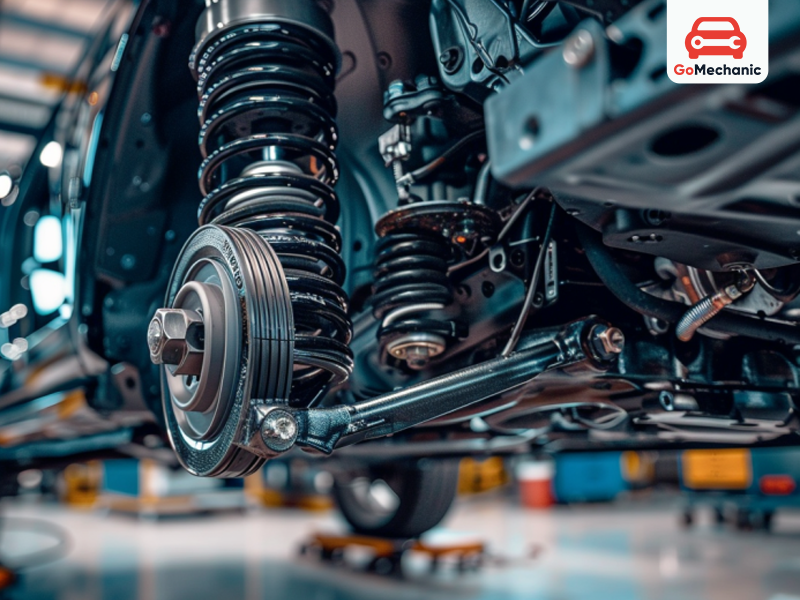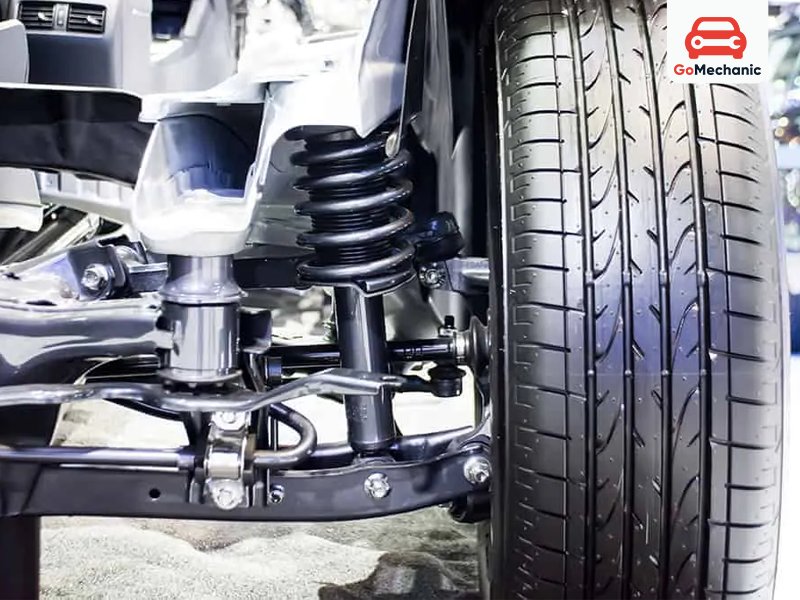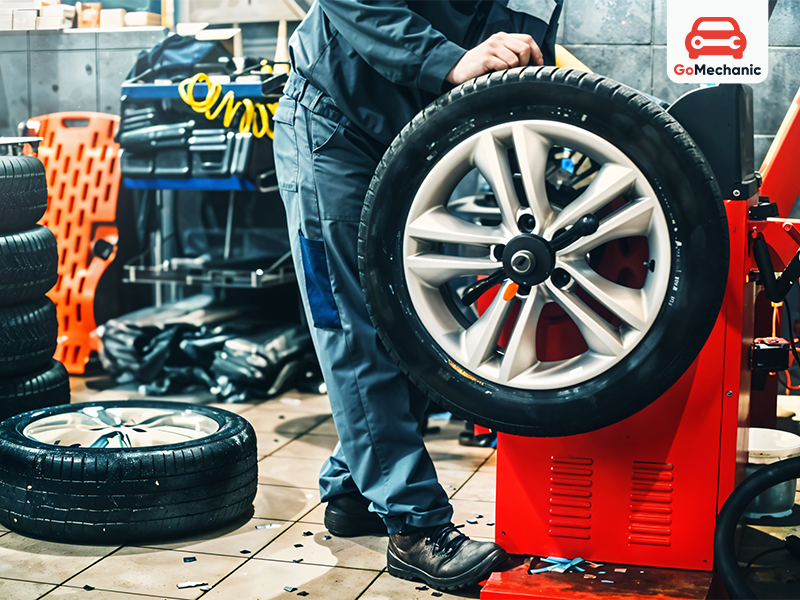What is a Car Suspension System?
Car suspension is a structure of constituents that interlinks the car wheels to the body. It is designed to help dampen shock from the road and to ensure a comfortable ride. The tyres remain in contact with the road in order to improve the car’s handling and safety capabilities. Generally, it includes springs and shock absorbers that are connected or mounted to other elements to stabilize and dampen vibrations in the vehicle.
Suspension Symphony: How Does It Work
A car’s suspension system is made up of a number of main parts, each of which has a distinct purpose. These car suspension parts mostly consist of:

1. Shock Absorbers
These are pistons with lengthy tubes that are filled with liquid (and occasionally gas). These provide support to springs by compressing and extending, which lessens the effect of a dip or bump in the road.
2. Coil springs
Your car’s spring system absorbs heavy impacts from uneven roads and potholes. To prevent them from causing problems for other suspension components, they have been made to tolerate extremely high pressure.
3. Struts

These are a group of springs and shock absorbers that are meant to provide your car with some structural support. Not all cars have struts, those that do usually only have them on one axle.
4. Tyres
One part of your car’s suspension system is the tyres. These are the sole suspension system components that come into contact with the road. Tyres absorb the greatest impacts of road dips and bumps. The impact is then transferred to struts and/or shocks.
Also Read: How to Pick the Best Tyres for Your Driving Needs
5. The Leaf Springs
They are made up of many metal plates that are fastened together and gently bent. These help in damping the vertical vibration and are generally found in cars with solid rear axles.
How To Do Maintenance
1. Regular Inspections
Maintenance of a healthy car suspension system requires that a qualified mechanic performs regular checks. Look at every component for signs of wear, damage, or leaks during routine maintenance checks.
The mechanic might perform a thorough examination of the suspension system as a whole to spot potential issues early. The damage would be controlled, and the cost of its repairs would be minimised. Cars with air suspension need specialised tools for their maintenance.
Also Read: How Regular Car Maintenance Saves You Money in 2024
2. Replace Worn-Out Parts
Through the course of time, some parts of the vehicles exposed to normal usage and environmental conditions deteriorate with age. Worn-out shock absorbers, springs, and control arms can ultimately create a critical issue for your car’s ride quality, handling, and safety.
Usually, a worn-out part must be replaced as soon as possible. A worn-out shock absorber can cause the vehicle to bounce excessively, thus losing control. Worn-out springs, on the other hand, can cause the vehicle to sit poorly on one side, either by lifting or sinking.
3. Avoid Rough Terrain

While rough terrain cannot always be avoided, minimising exposure will certainly help extend the life of your car suspension. The closer you drive to a pothole or large bump, the more impact you are causing on your suspension components or generally shortening their useful lifespan. When driving over such obstacles, go slowly and cautiously to ensure that minimum force is exerted on your suspension system.
4. Maintain Proper Tyre Pressure

Under-inflated tyres impose additional stress on your car suspension system. In under-inflated tyres, the rubber deforms and thus absorbs more shocks from the road. It puts excessive stress on the suspension parts. Above all, proper tyre inflation makes sure that the distribution of load is even and the stress imposed on your car suspension system is reduced.
5. Regular wheel alignment
Misaligned tyres cause uneven wear, therefore imposing a lot of pressure on your car suspension system. When your car’s wheels are misaligned, they can accidentally pull in one direction. They can also cause excessive wear on the inside or outside edges of the tyres.
This can easily lead to early tyre wear and increased stress on the car suspension components. Aligned wheels ensure a smooth ride. Regular wheel alignments can improve your car’s handling, tyre life, and overall suspension health.





